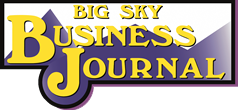Will adding to regulations for businesses who offer massage services help curb illegal human trafficking and prostitution?
The Billings City Council is moving forward with a proposal to impose more regulations on businesses that provide massage therapy, including an additional business license.
The crackdown is hoped to weed out establishments that pose as legitimate massage therapists as cover for human trafficking and prostitution. The approach uses city code enforcement to stop criminal activity where criminal law enforcement has failed, leaving Billings as having the most incidents of human trafficking of any city in the state.
Discussion about the issue drug the Billings City Council into a long late-hour work session last week. In the end, after listening to dozens and dozens of phone calls, the council acted to place the matter on a formal agenda at some point in the future.
Many legitimate massage therapy businesses objected to being used in the strategy, and expressed as much during the virtual meeting, on phone calls for some two hours. Some of the calls were from massage therapists and others who supported the proposal out of concern about human trafficking.
The proposed regulations place much of the onus of trying to rein in human trafficking — which quite often includes prostitution rings – upon how massage therapy businesses will have to operate in order to avoid being penalized. They will also be required to purchase an additional business license beyond that which they get from the state.
The city will require an additional business license imposing a $55 fee, fingerprinting and background checks for business owners. There are also stipulations regarding how the businesses should function including the requirements for dress, of keeping doors unlocked, keeping regular business hours, having interiors well lighted and high visibility through windows. Violations of these practices impose stiff fines and imprisonment.
Despite many of the callers objecting to the city’s approach, no one disputed the fact that Billings faces a very serious problem because of human trafficking. An FBI Special Agent, Brandon Walter, spoke to the council, saying that about half of Billings’ human trafficking problems stem from perpetrators fronting as massage therapists. Billings has more of a problem with human trafficking more than any other Montana city, and the city has generated a reputation, that extends far beyond the region, as being lax in regard to enforcement, which tends to attract more criminals.
There were many calls from supporters of the heightened regulations saying that they believe what was being required of massage therapists isn’t so onerous and well worth the effort to save the victims of human trafficking.
Many of the massage therapists, however, said they believe the issue is a bigger one for the city and should be addressed on a broader scale rather than focusing on their industry. Many were indignant for having been told by some city officials that they just needed to “take one for the team.”
It’s a matter for law enforcement, not for code enforcement, it was stated.
Enforcement of the regulations will be complaint -driven with code enforcement officers responding to calls. The city lacks the staffing to initiate investigations.
It was stated that the hope is that enforcing the codes will “tip over” into criminal charges.
A couple of callers said that reports from massage therapists in other communities who have followed a similar approach say that it didn’t work to curb the criminal activity. The task force that has worked on developing the new regulation reported just the opposite from the cities they said they had contacted.
City Administrator Chris Kukulski pointed out that the benefit of making it a code enforcement issue that relies upon complaints from citizens is a low cost approach for the city, which struggles with having enough funding to hire the needed law enforcement.
Many of those calling into the virtual meeting voiced indignation at being lumped in with the activities of criminals. They object to being categorized as “adult entertainment” or called “parlors” rather than a health care service or provider, which is how the industry sees itself.
